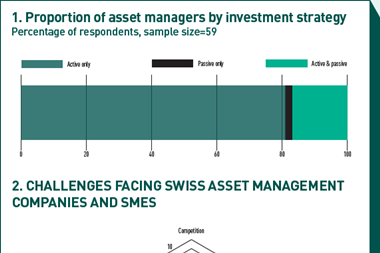The public pension fund for the Swiss canton of Basel-Landschaft is developing an investment strategy more oriented towards sustainability.
Implementation of such a strategy was “top of the agenda” for 2019, Basellandschaftliche Pensionskasse (BLPK) said in a statement.
It became a member of SVVK-ASIR, a Swiss responsible investment association that was founded by a group of major domestic institutional investors, at the beginning of the month.
Stephan Wetterwald, chief executive at the CHF9.4bn (€8.3bn) pension fund, said: “We are aware that as a public pension fund, we are particularly called upon to take account of ethical as well as economic criteria in our investment policy.”
He told IPE the pension fund had assessed its existing portfolio, but he could not say much more about what its next steps would be as it was still in discussions with the board of trustees.
The strategy would be finalised by early summer, according to Wetterwald.
He indicated it would be informed by Swiss and international “norms” – laws and conventions – about sustainability.
BLPK is the Swiss responsible investment association’s ninth member. The environmental, social and corporate governance (ESG) criteria that SVVK-ASIR applies are also defined on the basis of Swiss laws and regulations, as well as international agreements and conventions.
BLPK’s move to develop a “sustainable investment strategy” comes as many Swiss Pensionskassen, according to an independent adviser, are “overwhelmed” by the ESG investing trend.
According to the World Wildlife Fund and ratings agency Inrate, the majority of the 20 largest Swiss pension funds “are still relatively far off the WWF vision for the second pillar to play an active role in helping shape a more sustainable society”.
BLPK has around 24,000 beneficiaries and more than 200 affiliated employers, including local authorities, retirement homes, and higher education institutions.
In response to lower return expectations, the pension fund last year cut the “technischer Zinssatz” – the rate it uses to calculate liabilities – from 3% to 1.75%.
As a result it is also implementing a gradual reduction of the conversion rate that determines a beneficiary’s yearly pension. For a 65-year old, this is to be lowered from 5.8% to 5% by 2022.









No comments yet